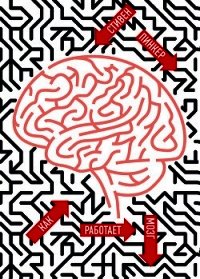Язык как инстинкт - Пинкер Стивен (книги серии онлайн .TXT) 📗
Kim J. J., Marcus G. F., Pinker S., Hollander M. & Coppola M. 1994. Sensitivity of children’s inflection to morphological structure // Journal of Child Language, 21. P. 173–209.
King M. & Wilson A. 1975. Evolution at two levels in humans and chimpanzees // Science, 188. P. 107–116.
Kinsbourne M. 1978. Evolution of language in relation to lateral action // M. Kinsbourne (Ed.), Asymmetrical function of the brain. New York: Cambridge University Press.
Kiparsky P. 1976. Historical linguistics and the origin of language // Harnad, Steklis, & Lancaster. 1976.
Kiparsky P. 1982. Lexical phonology and morphology // I. S. Yang (Ed.), Linguistics in the morning calm. Seoul: Hansin.
Kitcher P. 1985. Vaulting ambition: Sociobiology and the quest for human nature. Cambridge, Mass.: MIT Press.
Klima E. & Bellugi U. 1979. The signs of language. Cambridge, Mass.: Harvard University Press.
Kluender R. & Kutas M. 1993. Bridging the gap: Evidence from ERPs on the processing of unbounded dependencies // Journal of Cognitive Neuroscience, 4.
Konner M. 1982. The tangled wing: Biological constraints on the human spirit. Harper.
Kornai A. & Pullum G. K. 1990. The X-bar theory of phrase structure // Language, 66. P. 24–50.
Korzybski A. 1933. Science and sanity: An introduction to non-Aristotelian systems and General Semantics. Lancaster, Penn.: International Non-Aristotelian Library.
Kosslyn S. M. 1983. Ghosts in the mind’s machine: Creating and using images in the brain. New York: Norton.
Kosslyn S. M. 1987. Seeing and imagining in the cerebral hemispheres: A computational approach // Psychological Review, 94. P. 184–175.
Krasnegor N. A., Rumbaugh D. M., Schiefelbusch R. L. & Studdert-Kennedy M. (Eds.) 1991. Biological and behavioral determinants of language development. Hillsdale, N. J.: Erlbaum.
Kučera H. 1992. The mathematics of language // The American Heritage Dictionary of the English language (3rd ed.). Boston: Houghton Mifflin.
Kuhl P. & Williams K. A., Lacerda F., Stevens K. N. & Lindblom B. 1992. Linguistic experience alters phonetic perception in infants by six months of age // Science, 255. P. 606–608.
Kuno S. 1974. The position of relative clauses and conjunctions // Linguistic Inquiry, 5. P. 117–136.
Labov W. 1969. The logic ofnonstandard English // Georgetown Monographs on Language and Linguistics, 22. P. 1–31.
Ladefoged P. 1992. Another view of endangered languages // Language, 68, 809–811.
Lakoff G. 1987. Women, fire, and dangerous things. Chicago: University of Chicago Press.
Lakoff G. & Johnson M. 1980. Metaphors we live by. Chicago: University of Chicago Press (рус. пер.: Лакофф Дж., Джонсон М. Метафоры, которыми мы живем. М.: УРСС, 2004).
Lakoff R. 1990. Talking power: The politics of language in our lives. New York: Basic Books.
Lambert D. & The Diagram Group. 1987. The field guide to early man. New York: Facts on File Publications.
Lederer R. 1987. Anguished English. Charleston: Wyrick.
Lederer R. 1990. Crazy English. New York: Pocket Books.
Leech G. N. 1983. Principles of pragmatics. London: Longman.
Lenat D. B. & Guha D. V. 1990. Building large knowledge-based systems // Reading, Mass.: Addison-Wesley.
Lenneberg E. H. 1953. Cognition and ethnolinguistics // Language, 29, 463–471.
Lenneberg E. H. 1967. Biological foundations of language. New York: Wiley.
Lesser V. R., Fennel R. D., Erman L. D. & Reddy R. D. 1975. The Hearsay II speech understanding system // IEEE Transactions on Acoustics, Speech, and Signal Processing, 23. P. 11–24.
Levinson S. C. 1983. Pragmatics. New York: Cambridge University Press.
Lewin R. 1980. Is your brain really necessary? // Science, 210. P. 1232–1234.
Lewontin R. C. 1966. Review of G. C. Williams’ «Adaptation and natural selection» // Science, 152. P. 338–339.
Lewontin R. C. 1982. Human diversity. San Francisco: Scientific American.
Lewontin R. C., Rose S. & Kamin L. 1984. Not in our genes. New York: Pantheon.
Liberman A. M., Cooper F. S., Shankweiler D. P. & Studdert-Kennedy M. 1967. Perception of the speech code // Psychological Review, 74. P. 431–461.
Liberman A. M. & Mattingly I. G. 1989. A specialization for speech perception // Science, 243. P. 489–494.
Lieberman P. 1984. The biology and evolution of language. Cambridge, Mass.: Harvard University Press.
Lieberman P. 1990. Not invented here // Pinker & Bloom. 1990.
Lieberman P., Kako. E., Friedman J., Tajchman G., Feldman L. S. & Jiminez E. B. 1992. Speech production, syntax comprehension, and cognitive deficits in Parkinson’s Disease // Brain and Language, 43. P. 169–189.
Limber J. 1973. The genesis of complex sentences // T. E. Moore (Ed.), Cognitive development and the acquisition of language. New York: Academic Press.
Linebarger M., Schwartz M. F. & Saffran E. M. 1983. Sensitivity to grammatical structure in so-called agrammatic aphasics // Cognition, 13. P. 361–392.
Liu L. G. 1985. Reasoning counterfactually in Chinese: Are there any obstacles? // Cognition, 21. P. 239–270.
Locke J. L. 1992. Structure and stimulation in the ontogeny of spoken language // Developmental Psychobiology, 28. P. 430–440.
Locke J. L. & Mather P. L. 1989. Genetic factors in the ontogeny of spoken language: Evidence from monozygotic and dizygotic twins // Journal of Child Language, 16. P. 553–559.
Logan R. K. 1986. The alphabet effect. New York: St. Martin’s Press.
Long M. H. 1990. Maturational constraints on language development // Studies in Second Language Acquisition, 12. P. 251–285.
Lorge I. & Chall J. 1963. Estimating the size of vocabularies of children and adults: An analysis of methodological issues. Journal of Experimental Education, 32. P. 147–157.
Ludlow C. L. & Cooper J. A. (Eds.) 1983. Genetic aspects of speech and language disorders. New York: Academic Press.
Lykken D. T., McGue M., Tellegen A. & Bouchard T. J., Jr. 1992. Emergenesis: Genetic traits that may not run in families // American Psychologist, 47. P. 1565–1577.
MacDonald M. C. 1989. Priming effects from gaps to antecedents // Language and Cognitive Processes, 4. P. 1–72.
MacDonald M. C., Just M. A. & Carpenter P. A. 1992. Working memory constraints on the processing of syntactic ambiguity // Cognitive Psychology, 24. P. 56–98.
MacWhinney, B. 1991. The CHILDES Project: Tools for Analyzing Talk. Hillsdale, N. J.: Erlbaum.
Malotki E. 1983. Hopt lime: A linguistic analysis of temporal concepts in the Hopi language. Berlin: Mouton.
Marcus G. F. 1993. Negative evidence in language acquisition // Cognition, 46. P. 53–85.
Marcus G. F., Brinkmann U., Clahsen H., Wiese R., Woest A. & Pinker S. 1993. German inflection: The exception that proves the rule. MIT Center for Cognitive Science Occasional Paper #47.
Marcus G. F., Pinker S., Ullman M., Hollander M., Rosen T. J. & Xu F. 1992. Overregularization in language acquisition // Monographs of the Society for Research in Child Development, 57.
Markman E. 1989. Categorization and naming in children: Problems of induction. Cambridge, Mass.: MIT Press.
Marr D. 1982. Vision. San Francisco: Freeman.
Marslen-Wilson W. 1975. Sentence comprehension as an interactive, parallel process. Science, 189. P. 226–228.
Marslen-Wilson W. (Ed.) 1989. Lexical representation and process. Cambridge, Mass.: MIT Press.




